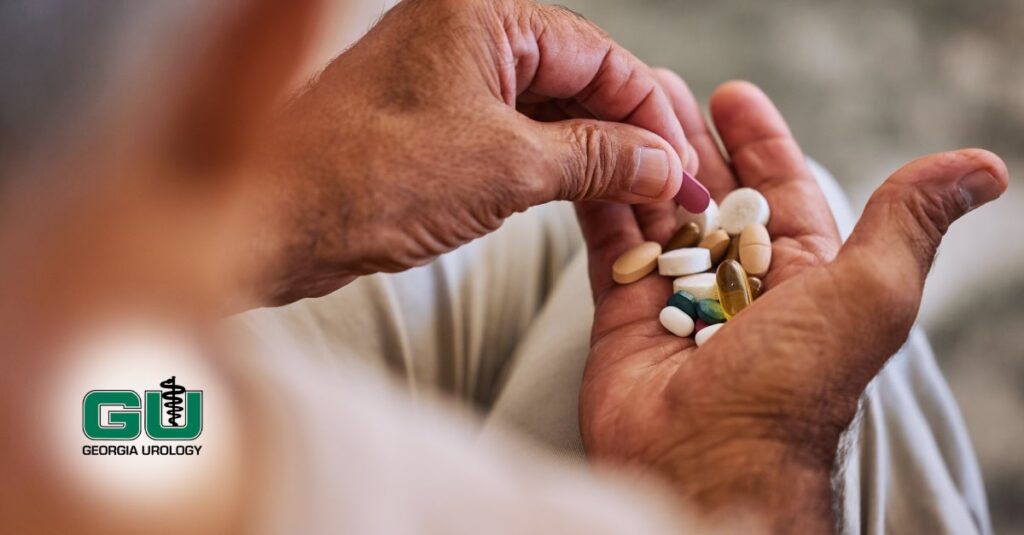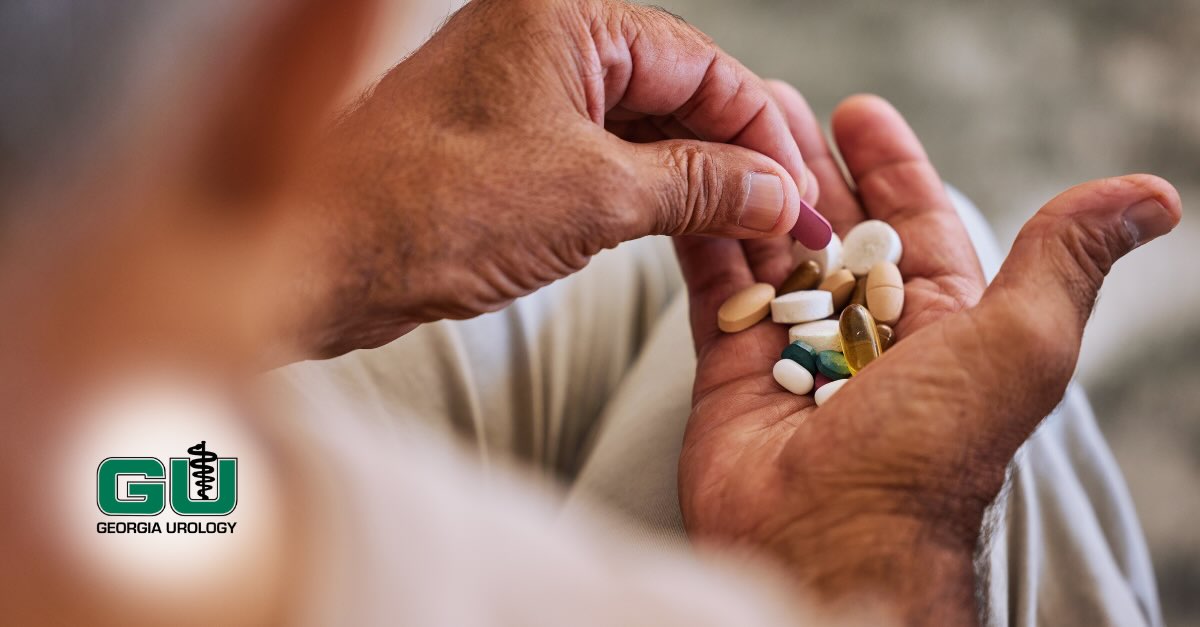
Saw Palmetto for BPH: Unveiling the Truth About Its Effectiveness
Benign Prostatic Hyperplasia (BPH), or enlarged prostate, is a common condition affecting men as they age. Symptoms can range from frequent urination and weak urine stream to difficulty starting urination and feeling like the bladder isn’t completely empty. Many men seek alternative or complementary therapies to manage these symptoms, and saw palmetto is often at the top of the list. But does saw palmetto really work for BPH? This article delves into the science behind saw palmetto and its purported benefits for BPH, examining the evidence and offering a balanced perspective.
What is Saw Palmetto?
Saw palmetto (Serenoa repens) is a type of palm native to the southeastern United States. It produces berries that have been used for centuries by Native Americans for various medicinal purposes, including treating urinary and reproductive problems. Today, extracts from these berries are widely available as dietary supplements marketed to alleviate symptoms of BPH.
How Saw Palmetto is Believed to Work
The exact mechanism by which saw palmetto is thought to alleviate BPH symptoms is not fully understood, but several theories exist. One prominent theory revolves around its potential to inhibit the enzyme 5-alpha-reductase. This enzyme converts testosterone into dihydrotestosterone (DHT), a hormone that plays a role in prostate enlargement. By inhibiting this conversion, saw palmetto is hypothesized to reduce DHT levels in the prostate, potentially slowing down its growth and reducing symptoms. [See also: Natural Remedies for Prostate Health]
Another proposed mechanism involves saw palmetto’s anti-inflammatory properties. Inflammation is believed to contribute to BPH symptoms, and saw palmetto may help reduce inflammation in the prostate, thereby easing urinary difficulties.
The Science Behind Saw Palmetto and BPH: Examining the Evidence
While anecdotal evidence and traditional use suggest benefits, the scientific evidence surrounding saw palmetto’s effectiveness for BPH is mixed and often conflicting. Numerous studies have been conducted to evaluate its impact on BPH symptoms, and the results have been far from conclusive.
Large-Scale Clinical Trials
Several large-scale, well-designed clinical trials have investigated the efficacy of saw palmetto for BPH. One notable study, published in the New England Journal of Medicine, involved over 300 men with BPH and found that saw palmetto was no more effective than a placebo in improving urinary symptoms or prostate size. This study cast significant doubt on the widespread belief in saw palmetto’s benefits.
Another systematic review and meta-analysis of multiple trials, published in the Journal of the American Medical Association, also concluded that saw palmetto did not significantly improve urinary flow measures or prostate size compared to placebo. These findings further challenged the notion that saw palmetto is an effective treatment for BPH. [See also: Understanding Prostate Enlargement]
Conflicting Study Results
Despite the negative findings from some large trials, other studies have reported more positive results. Some research suggests that certain saw palmetto extracts, particularly those with higher concentrations of specific fatty acids, may offer modest improvements in urinary symptoms. However, these studies are often smaller and may have methodological limitations that make it difficult to draw definitive conclusions.
The variability in study results may be attributed to several factors, including differences in the saw palmetto extracts used, the dosage administered, the duration of treatment, and the characteristics of the study participants. This heterogeneity makes it challenging to compare results across different studies and to determine the true effectiveness of saw palmetto for BPH.
Potential Benefits and Risks
Even with the conflicting evidence, some men report experiencing relief from BPH symptoms while taking saw palmetto. Potential benefits may include:
- Reduced urinary frequency
- Improved urinary flow
- Decreased nighttime urination (nocturia)
- Reduced discomfort during urination
However, it’s important to weigh these potential benefits against the possible risks and side effects associated with saw palmetto. Common side effects are generally mild and may include:
- Nausea
- Stomach upset
- Diarrhea
- Headache
- Dizziness
In rare cases, more serious side effects, such as liver problems or allergic reactions, have been reported. It’s crucial to consult with a healthcare professional before taking saw palmetto, especially if you have any underlying medical conditions or are taking other medications. Saw palmetto can potentially interact with blood thinners and other drugs.
Dosage and Forms of Saw Palmetto
Saw palmetto is available in various forms, including capsules, tablets, liquid extracts, and powders. The typical dosage used in studies ranges from 160 to 320 mg per day. However, the optimal dosage may vary depending on the individual and the specific product used. It’s essential to follow the instructions on the product label and to consult with a healthcare provider to determine the appropriate dosage for your needs. [See also: Prostate Health Supplements: What Works and What Doesn’t]
The quality and potency of saw palmetto supplements can also vary significantly. Look for products that have been tested by a third-party organization, such as USP or NSF International, to ensure that they meet quality standards and contain the stated amount of active ingredients.
Alternatives to Saw Palmetto for BPH
If saw palmetto is not effective or if you prefer to explore other treatment options, several alternatives are available for managing BPH symptoms. These include:
- Alpha-blockers: These medications relax the muscles in the prostate and bladder neck, making it easier to urinate.
- 5-alpha-reductase inhibitors: These medications shrink the prostate by blocking the conversion of testosterone to DHT.
- Tadalafil (Cialis): This medication, primarily used for erectile dysfunction, can also help improve urinary symptoms associated with BPH.
- Minimally invasive procedures: These procedures, such as transurethral microwave thermotherapy (TUMT) and transurethral needle ablation (TUNA), use heat or radiofrequency energy to destroy excess prostate tissue.
- Surgery: In severe cases, surgery may be necessary to remove part or all of the prostate gland.
Lifestyle changes, such as reducing fluid intake before bedtime, avoiding caffeine and alcohol, and practicing bladder training techniques, can also help manage BPH symptoms.
Conclusion: Is Saw Palmetto Worth Trying?
The evidence surrounding saw palmetto’s effectiveness for BPH is complex and inconclusive. While some men may experience relief from symptoms, large-scale clinical trials have failed to demonstrate a significant benefit compared to placebo. Given the potential for side effects and the availability of other proven treatments, it’s crucial to discuss the risks and benefits of saw palmetto with a healthcare professional before starting treatment. Ultimately, the decision of whether or not to try saw palmetto for BPH should be made on an individual basis, taking into account your specific symptoms, medical history, and preferences.

